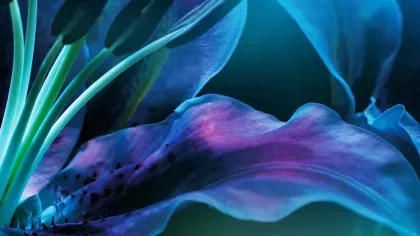16 October 2023
Breaking the binary: Celebrating diversity in nature
Nature most certainly isn’t binary or straightforward: it is blurry, unusual, and very queer.

When it comes to reproduction, nature is wonderfully complex with infinite possibilities that offer a challenge to our traditional binary language.
While the basic system of reproduction in many plants is binary, involving the fusion of male and female gametes, some individual plants do not neatly fit into traditional categories.
As for fungi, well, even the basic system is anything but binary…
Here we explore the weird and wonderful world of sex through the lives of plants and fungi.
Re-envisioning plant reproduction: A fresh perspective
Plants generally have what we might call ‘sexes’, male and female. But where an individual plant sits on that spectrum varies and is certainly not always very clear.
An individual plant can be male, or it can be female. It can have both staminate (male or pollen-producing) and pistillate (female or ovule-producing) flowers on the same individual plant, or it can have one type of flower with both male and female parts (bisexual or binate), or a combination of the above.
Other species can switch between male and female in terms of functional sex by altering the time when male and female parts are maturing and functioning.
Take Ruizia mauritiana for example. It can change the sex of the flowers it produces depending on the temperature of the environment. In hot conditions it grows male flowers, while in cooler conditions it produces female ones.
Considering plants are distantly related to us humans, their methods of reproduction are a bit more familiar than fungi, and this is where things get REALLY weird.

The intriguing world of fungi mating types
Fungi don’t have what we would refer to as biological sexes. At all. Instead, they engage in sexual reproduction with any compatible member of their own species.
And that is when they are being sexual.
Fungi can be asexual, sexual, or switch between the two states as and when they fancy or when conditions are favourable.
When it does come to sexual reproduction, fungi rely on meeting a compatible partner which has a different ‘mating type’.
Mating types in fungi can be thought of as one of those dating events where everyone has a nut or bolt, and you must find the complimentary nut to your bolt. Two nuts or two bolts can’t hook up, and they need to be different. The reality with fungi is that they can have two nuts or bolts or the entire shelf at Screwfix!
The shelf fungus Trichaptum has been found to have over 17,000 mating types, so in vague and human-compatible terms, that’s over 17,000 sexes.
Earlier this year, it was discovered that invasive deathcap mushrooms (Amanita phalloides) in North America have recently evolved the ability to engage in sexual reproduction with themselves, something our European deathcaps can’t do.


The fascinating behaviours of plants and fungi shed light on our boundless and complex natural world, and the vital importance of protecting it.
This autumn at Kew, celebrate this spectacular diversity at our new festival, Queer Nature.



